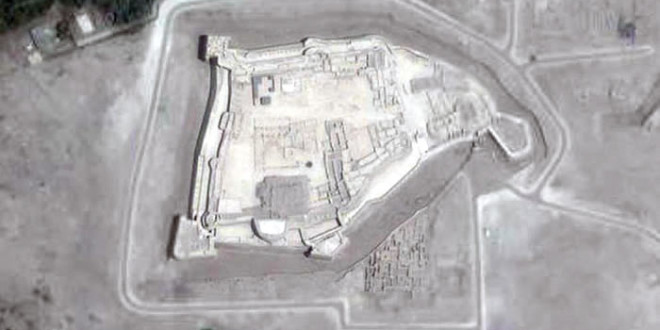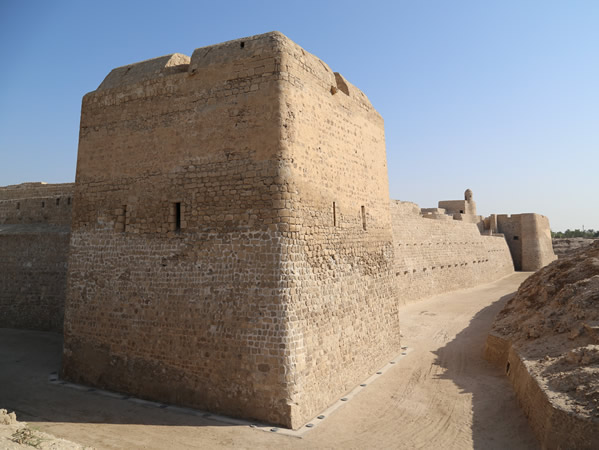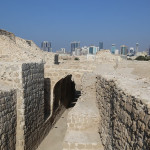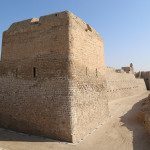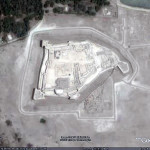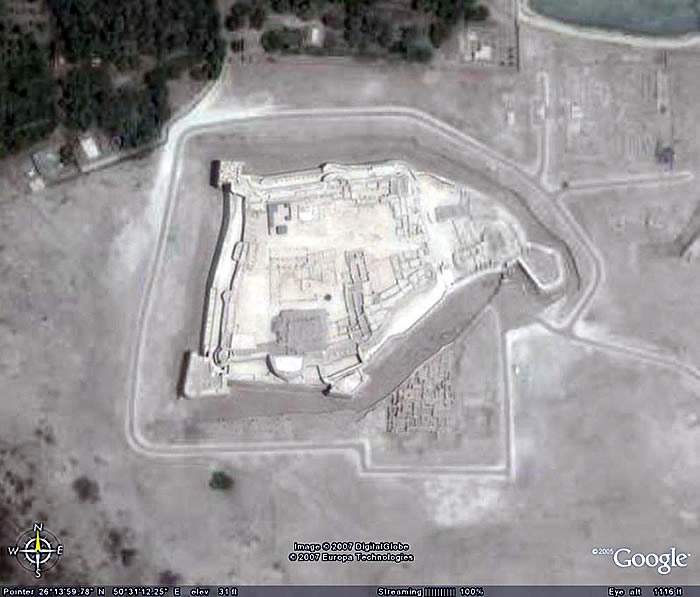Written by Marco Ramerini. Photos by João Sarmento. English text revision by Dietrich Köster.
The Portuguese Fort of Qala’at al-Bahrain (Bahrain Fort), Bahrain.
Remains of Qal’ At Al-Bahrain (16th century) or Portuguese Fort. The fort consists of three huge strongholds and the remnants of two towers in the middle and full walls linking the three strongholds together. It is surrounded by a trench. It lies on the northern coast of the island on the westernmost point of an open gulf close to the city of Manama.
The islands of Bahrain were under Portuguese control from the middle of the 16th century. At that time the Portuguese – who had their main base in the fortress of Hormuz – dominated the trade in the Persian Gulf. The Portuguese control over the islands of Bahrain lasted until the early 17th century.
The fort was probably occupied by the Portuguese in 1559 under the command of D. Antao de Noronha. After the conquest the Portuguese enlarged and fortified the Arab fort who had occupied, it seems that to the design work of the fortifications have participated the Portuguese architect Inofre de Carvalho. A plant of the fortress of Bahrain is presented in the book “Livro das Plantas de todas as fortalezas, Cidades and povoaçoens do Estado da Índia Oriental” written by Pedro Barreto de Resende. The Portuguese were expelled from the islands of Bahrain in 1602 by the forces of Shah Abbas.
The Portuguese Fort of Qala’at al-Bahrain (Bahrain Fort) is on the UNESCO World Heritage list since 2005. Inscription criteria: Qal’at al–Bahrain is a typical tell – an artificial mound created by many successive layers of human occupation. The strata of the 300×600-metre tell testify to continuous human presence from about 2300 B.C. to the 16th century A.D. About 25% of the site have been excavated revealing structures of different types: residential, public, commercial, religious and military. They testify to the importance of the site, a trading port, over the centuries. On the top of the 12m high mound there is the impressive Portuguese fort, which gave the whole site its name, qal’a, meaning fort. The site was the capital of the Dilmun, one of most important ancient civilizations of the region. It contains the richest remains inventoried of this civilization, which was hitherto only known from written Sumerian references.
- Fort Qal’at al-Bahrain, Bahrain. Author and Copyright João Sarmento
- Fort Qal’at al-Bahrain, Bahrain. Author and Copyright João Sarmento,
- Qala’at al-Bahrain (Bahrain Fort), Bahrain
BIBLIOGRAPHY:
– Monique Kervran, Fredrik Hiebert e Axelle Rougeulle “Qal’at Al-bahrain: A Trading and Military Outpost: 3rd Millenium B.cc.-17th Century A.d.”
 Colonial Voyage The website dedicated to the Colonial History
Colonial Voyage The website dedicated to the Colonial History
